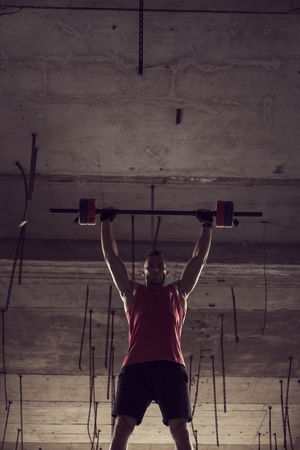1. The Rise of Group Fitness Culture in America
In recent years, group fitness classes have exploded in popularity across the United States. From early morning CrossFit sessions to high-energy spin studios and dance-inspired workouts, Americans are flocking to shared exercise experiences like never before. This trend isnt just about breaking a sweat—its about building community, finding motivation, and making fitness fun.
What Makes Group Fitness So Popular?
Several factors have contributed to the rise of group fitness culture in America:
| Factor | Description |
|---|---|
| Community Support | People enjoy working out with others, which creates a sense of belonging and accountability. |
| Motivation | Group energy and encouragement from instructors help participants push themselves further than they might alone. |
| Diversity of Classes | Theres something for everyone—yoga, HIIT, cycling, bootcamp, Zumba, and more. |
| Professional Guidance | Certified trainers guide workouts, making it easier for people to learn proper form and avoid injury. |
| Trendy Experience | Many studios offer unique vibes, playlists, and lighting that make working out feel like an event rather than a chore. |
The Evolution of Fitness Studios
The American fitness scene has evolved far beyond traditional gyms. Boutique studios now focus on specific workout styles, such as indoor cycling (spin), functional training (CrossFit), barre, or boxing. These spaces often emphasize a strong brand identity and personalized experience. Whether its SoulCycles cult-like following or Orangetheorys heart-rate-based challenges, these environments encourage regular attendance and loyalty among members.
A Shift Toward Wellness as a Lifestyle
The popularity of group fitness also reflects a broader shift: Americans increasingly view wellness as a lifestyle choice rather than just a physical activity. Many people seek not only physical benefits but also mental health support, stress relief, and social connection through their workouts. This holistic approach is transforming how people think about exercise and community in the U.S.
2. Popular Group Fitness Trends: From CrossFit to Spin
Group fitness classes have exploded in popularity across the United States, and it’s easy to see why. These classes bring people together with high-energy instructors, motivating playlists, and a sense of community that makes working out way more fun. Let’s take a closer look at some of the top group fitness class formats that Americans can’t get enough of:
CrossFit
CrossFit is all about functional movements performed at high intensity. Classes usually include a mix of weightlifting, cardio, and bodyweight exercises. The workouts change every day, which keeps things exciting and challenging. Many people love the supportive atmosphere and how everyone cheers each other on, no matter their fitness level.
Spin Studios
If you’ve ever heard friends rave about “SoulCycle” or “Flywheel,” you know how big spin studios are in the U.S. These indoor cycling classes are set to energetic music and often feature mood lighting to help you focus and push through tough intervals. Spin classes are popular because they’re low-impact but still provide an intense cardio workout that leaves you feeling accomplished.
Bootcamps
Bootcamp classes draw inspiration from military training and combine strength, endurance, and agility exercises in a fast-paced environment. Expect sprints, push-ups, burpees, and circuit training using equipment like kettlebells or resistance bands. The group setting encourages camaraderie and keeps participants motivated from start to finish.
HIIT (High-Intensity Interval Training)
HIIT has taken over gyms everywhere thanks to its efficiency. These classes alternate between short bursts of intense exercise and brief recovery periods, making them perfect for people with busy schedules. HIIT workouts can include everything from jumping jacks to squat jumps, and they burn lots of calories in a short amount of time.
Dance-Based Classes (like Zumba)
Zumba and similar dance-based fitness classes turn exercise into a party! Set to upbeat music, these sessions mix Latin rhythms with easy-to-follow dance moves. It’s a great option for anyone looking to have fun while breaking a sweat, and there’s no judgment if your dance moves aren’t perfect—just keep moving!
Comparison Table: Top Group Fitness Class Formats in the U.S.
| Class Format | Main Focus | Typical Duration | Best For |
|---|---|---|---|
| CrossFit | Strength & Cardio Mix | 45-60 min | Variety & Community Support |
| Spin Studios | Cardio/Endurance | 45-60 min | Cycling Enthusiasts & Low-Impact Workouts |
| Bootcamp | Total Body Conditioning | 45-60 min | Pushing Limits & Group Motivation |
| HIIT | High-Intensity Intervals | 20-45 min | Busy Schedules & Quick Results |
| Zumba/Dance-Based | Cardio/Dance Moves | 45-60 min | Dancing & Fun Workout Atmosphere |
No matter your fitness level or interests, there’s a group class out there for you. Americans love these formats not just for the physical benefits but also for the friendships and motivation that come from sweating it out together.

3. Community, Motivation, and Accountability
Why Group Fitness Classes Are More Than Just a Workout
Group fitness classes in the U.S. have become a cultural phenomenon, not just because of the workouts themselves, but also because of the powerful sense of community they foster. Whether its at a CrossFit box, spin studio, or yoga class, people are drawn to these settings for reasons that go beyond burning calories.
The Power of Community Bonding
One major reason group fitness is so popular is the feeling of belonging it creates. Many Americans find it easier to stay motivated when theyre surrounded by others with similar goals. Seeing familiar faces each week makes members feel part of something bigger than themselves, turning the gym from a chore into a social event. This sense of camaraderie can be especially important for newcomers or those who struggle with consistency.
Peer Support and Group Motivation
Another key factor is peer support. In group classes, encouragement comes not just from instructors but from fellow participants as well. This shared energy helps push everyone to give their best effort, even on tough days. Theres also a friendly competition aspect—seeing someone else achieve a new personal record or hit a milestone can inspire others to do the same.
How Group Fitness Supports Motivation and Accountability
| Aspect | Description | Example in U.S. Culture |
|---|---|---|
| Community Bonding | Building relationships through regular class attendance | Local CrossFit groups hosting weekend BBQs after workouts |
| Peer Support | Encouragement and motivation from classmates and instructors | Spin studios celebrating member milestones with shout-outs and music requests |
| Accountability | Consistent participation due to group expectations and scheduled sessions | Yoga studios offering sign-up apps that remind users about upcoming classes |
| Shared Goals | Pursuing fitness targets together, such as training for charity runs or competitions | Zumba classes forming teams for local 5K events or dance performances |
The Psychological Boost of Working Out Together
The psychological benefits are hard to ignore. Exercising with others can decrease feelings of stress and isolation while boosting happiness hormones like endorphins and oxytocin. In many American cities, group fitness studios double as social hubs where friendships are formed and personal growth is celebrated.
Group Fitness Trends That Emphasize Connection
This strong focus on community is why trends like “buddy passes” or themed workout events (think: ‘80s throwback rides at spin studios) have become so successful across the U.S. These experiences highlight how group exercise isn’t just about physical health—its also about making meaningful connections and building support systems that help people stick to their fitness journeys.
4. The Role of Technology and Social Media
Technology and social media have completely changed the way Americans experience group fitness classes. From booking a spot in your favorite spin studio to tracking your CrossFit progress, tech makes it easier and more fun to stay fit together. Let’s look at how apps, wearable gadgets, and social networks are fueling the popularity of group workouts across the country.
How Apps Make Group Fitness More Accessible
Fitness apps have become a go-to tool for both beginners and hardcore gym-goers. These apps let you sign up for classes, check schedules, and even join virtual group sessions from anywhere. Popular platforms like Mindbody, ClassPass, and Peloton not only help you find new workouts but also connect you with communities that match your fitness goals.
| App/Platform | Main Feature | How It Boosts Group Fitness |
|---|---|---|
| ClassPass | Class Booking & Discovery | Lets users try different studios and class types easily |
| Peloton | Live & On-Demand Classes | Creates a virtual community with real-time leaderboards and shoutouts |
| Mindbody | Studio Scheduling & Management | Makes signing up for classes super convenient and tracks attendance |
The Rise of Wearable Tech in Group Fitness
Wearable devices like Fitbits, Apple Watches, and heart rate monitors are now common sights in American gyms and studios. These gadgets give instant feedback on your performance during class—whether it’s calories burned or heart rate zones—making it easier to set goals and measure progress with friends or classmates.
Popular Wearables Used in U.S. Group Fitness Classes:
- Apple Watch: Tracks activity, syncs with fitness apps, and lets you compete with friends.
- Fitbit: Monitors steps, sleep, and shares stats in group challenges.
- Myzone Belt: Displays real-time effort levels on screens during classes, adding a competitive edge.
The Impact of Social Media on Group Fitness Culture
Social media platforms like Instagram, Facebook, and TikTok aren’t just for sharing selfies—they’re powerful motivators for people who love working out together. Studios post class highlights, members share their progress, and trainers create online challenges that keep everyone engaged. Social media also helps newcomers feel welcome by offering a sneak peek into different fitness communities before they even step inside a studio.
Main Ways Social Media Drives Engagement:
- Community Support: Sharing achievements builds encouragement among members.
- Event Promotion: Studios use stories and posts to announce special events or themed classes.
- User-Generated Content: Members tag locations or use hashtags to boost visibility for their favorite studios.
- Virtual Challenges: Online fitness challenges keep participants motivated outside the gym.
Together, these technologies make group fitness more interactive, inclusive, and motivating than ever before—helping Americans connect over shared goals from coast to coast.
5. Challenges and the Future of Group Fitness
Adapting to Post-Pandemic Realities
The COVID-19 pandemic changed how Americans approach fitness. Many group fitness classes had to shut down temporarily or limit class sizes. Even now, some people feel hesitant to return to crowded studios. To stay relevant, gyms and studios must focus on safety, cleanliness, and flexibility in their schedules.
The Rise of Virtual Classes
One big shift is the popularity of virtual group fitness. Americans have gotten used to working out at home with live-streamed or on-demand classes. While this offers convenience, it also means more competition for traditional studios. Fitness businesses now need to offer both in-person and virtual options to meet everyone’s needs.
Comparison: In-Person vs. Virtual Group Fitness
| Aspect | In-Person Classes | Virtual Classes |
|---|---|---|
| Community Feel | Strong social connections | More independent experience |
| Flexibility | Fixed schedule | Workout anytime, anywhere |
| Equipment | Full access at studio/gym | Limited to home equipment |
| Motivation Level | Higher accountability with peers/instructor | Requires more self-motivation |
Evolving Preferences of American Fitness Enthusiasts
The fitness crowd in the U.S. is always changing. Right now, people love workouts that are efficient and fun—think HIIT (High-Intensity Interval Training), dance-based classes like Zumba, or boutique cycling studios. There’s also a growing focus on mental health, so yoga and meditation classes are becoming more popular.
Main Challenges Facing Group Fitness Studios in the U.S.
- Keeping up with digital trends and technology
- Meeting demand for flexible memberships and hybrid classes (in-person + virtual)
- Staying innovative as new fitness trends emerge quickly
- Catering to diverse age groups and fitness levels
- Balancing affordable pricing with high-quality experiences
The future of group fitness in America depends on how well studios can adapt to these ongoing changes while still creating a sense of community and motivation that keeps people coming back.

